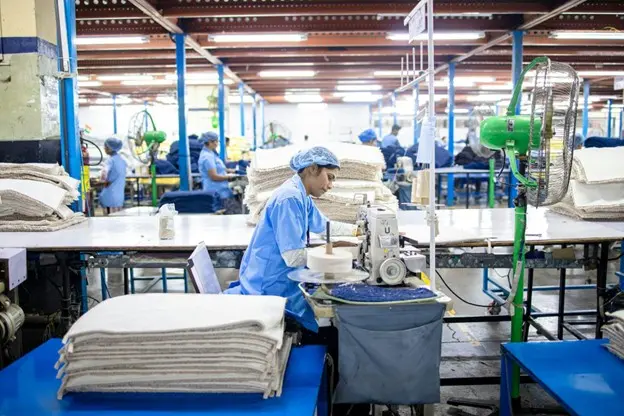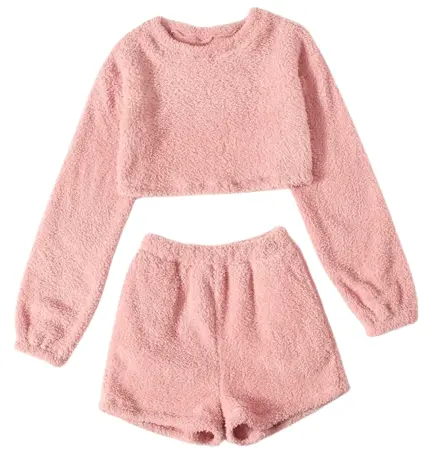Textile production is fast, continuous, and unforgiving. A single safety lapse or security incident can stop a dyeing line, ruin a batch, delay shipments, or jeopardize export contracts. In 2025, the most successful manufacturers are treating security as a production enabler rather than a cost center. The right manufacturing security system prevents costly downtime, flags non-adherence to safety rules, and gives leaders real time visibility across weaving halls, dye houses, finishing units, cut-and-sew floors, and distribution hubs. This article is about the Top 7 Manufacturing Security Solutions Every Textile Facility Needs in 2025.
Below are the seven manufacturing security solutions every textile facility should prioritize this year, with clear actions to help you integrate them with existing IP cameras and scale management across multiple locations. Top 7 Manufacturing Security Solutions Every Textile Facility Needs in 2025 in the following:

Top 7 Manufacturing Security Solutions Every Textile Facility Needs in 2025
1) AI-Driven Video Surveillance That Understands Your Floor
What it is: Modern manufacturing security solutions use on-camera or edge analytics to detect people, vehicles, unsafe behaviors, smoke, spills, and perimeter breaches. These systems work with your existing IP cameras, which protects past investments while adding advanced AI capabilities. Partnering with a provider like Coram brings added benefits, such as real-time on-device threat detection, reduced false alarms, and seamless integration with existing manufacturing infrastructure, ensuring textile facilities get reliable, low-latency protection without heavy IT setup.
Why textiles need it: Textile plants are unique. Lint, steam, glare, and repetitive motion can cause traditional motion detection to flood operators with false alarms. AI models trained for industrial scenes distinguish between normal operations and actionable risks. Examples include:
- PPE and uniform checks at entry points and critical zones
- Forklift and pedestrian separation with proximity alerts
- Restricted area violations near chemical stores, dye vats, and boiler rooms
- After-hours movement in yarn, fabric, and finished goods warehouses
- License plate recognition at gates to link incidents to vehicles
Deployment tips:
- Start with high-risk zones such as dye and chemical handling areas, loading docks, and electrical rooms.
- Use multi-sensor or panoramic cameras in wide production halls to minimize blind spots.
- Run analytics at the edge to keep bandwidth low and ensure alerts continue during backhaul outages.
- Integrate with your VMS and alarm monitoring so alerts are routed to the right person within seconds.
KPIs to track: False alarm rate, average response time, incidents detected outside patrol hours, and percentage of cameras with analytics enabled.
2) Access Control and Visitor Management That Reflect Process Risk
What it is: A layered access control system that uses smart cards, PINs, or biometrics, backed by policies for employees, contractors, and visitors. The system logs every entry and exit and can enforce multi-factor rules in high-risk rooms.
Why textiles need it: Unauthorized access to dye kitchens, labs, compressor rooms, steam distribution, and server closets creates safety and continuity risks. Visitor and contractor traffic spikes during expansion projects and maintenance turnarounds, which raises exposure.
Key capabilities:
- Role-based permissions that map to work cells and shifts
- Anti-passback and tailgating detection at critical doors
- Temporary credentials with automatic expiry for contractors and auditors
- Gatehouse integration to match driver IDs and vehicle plates to delivery windows
- Mustering reports for emergency roll calls
Deployment tips:
- Build an access matrix aligned to process hazards. For example, only trained dye operators can badge into chemical dosing areas.
- Sync access with HR and EHS systems so permissions change automatically when roles change.
- Pair doors with cameras to create video-verified access logs useful for investigations and audits.
KPIs to track: Unauthorized access attempts blocked, time to provision or revoke access, and mustering report accuracy during drills.
3) Fire Detection and Suppression Designed for Lint and Heat
What it is: A combination of aspirating smoke detection, heat and flame sensors, thermal imaging on cameras, and appropriate suppression, tuned for textile environments with airborne fibers and high temperatures.
Why textiles need it: Lint accumulation, hot surfaces, electrical panels, and chemical vapors increase fire risk. Conventional spot detectors clog or deliver late warnings in some halls. Early detection matters because a small flare-up near a stenter or dryer can cascade quickly.
Design principles for textile plants:
- Aspirating smoke detection in weaving and finishing where lint is heavy
- Heat and flame detectors near stenters, dryers, boilers, and compressors
- Camera-based thermal analytics to watch for abnormal heat signatures on conveyors and ducts
- Correct suppression for each zone. Wet systems for general areas, clean agents for electrical rooms, water mist or foam where appropriate, and rated cabinets for chemicals
- Interlocks and shutdowns that safely stop fuel, steam, or power when alarms trigger
Deployment tips:
- Schedule quarterly lint cleanouts around sensors and ducting.
- Tie alarms to plant PA and strobe beacons to cut through machine noise.
- Integrate with the VMS so operators can instantly pull camera views for any fire panel event.
KPIs to track: Detection time to first alarm, number of nuisance trips, and time to safe shutdown in drills.
4) Worker Safety and Compliance Monitoring That Reduces Injuries
What it is: Computer vision and sensor systems that verify adherence to EHS rules, such as PPE usage, machine guarding, and safe walkways, plus analytics that highlight hotspots before injuries occur.
Why textiles need it: Repetitive tasks, fast-moving rollers, cutters, and forklifts create a constant risk landscape. Manual supervision alone cannot keep up during shift changes and seasonal peaks.
High-impact use cases:
- PPE detection for gloves, safety shoes, eye protection, and hearing protection at zone entry
- Line-clear verification before machine start to prevent entanglement and nip point injuries
- Forklift speed and no-go zone enforcement using geofences and visual beacons
- Blocked fire exits and aisles alerts generated within minutes of obstruction
- Fatigue and micro-stoppage analysis to plan breaks and staffing
Deployment tips:
- Focus on coaching rather than policing. Use dashboards to recognize teams with strong safety adherence.
- Pair alerts with visual signage at the zone to reinforce correct behavior.
- Store redacted clips for training, with privacy masking where local rules require it.
KPIs to track: Recordable incident rate, near-miss reports with supporting video, PPE adherence percentage by zone and shift.
5) Perimeter, Yard, and Warehouse Security That Stops Loss Before It Starts
What it is: A layered system that blends smart fencing, radar or lidar for wide areas, cameras with analytics, and license plate recognition at gates. The goal is to deter, detect, and verify events without constant human patrols.
Why textiles need it: Yarn, fabric, and finished garments are high-value and move constantly between buildings, yards, and carriers. Theft, pilferage, and after-hours trespass can hide in this motion.
Key elements:
- Virtual tripwires and intrusion zones along fences and backlots
- LPR at gates to reconcile inbound and outbound vehicles with load plans
- Dock door analytics that verify open-door times and detect unauthorized loading
- Temporary mobile towers for overflow storage, expansion areas, or lighting blind spots
- Two-way audio to challenge trespassers immediately
Deployment tips:
- Map camera views to your yard management system so each bay or slot has a clear visual log.
- Place at least one high mast near the yard’s darkest corner to cover long approaches.
KPIs to track: After-hours detections, dwell time at docks, discrepancy investigations resolved with video evidence.
6) Cybersecurity for Cameras, Access, and OT Networks
What it is: Policies and controls that protect IP cameras, VMS, access control, badge printers, and production networks. The aim is to prevent cyber incidents that could halt production or expose designs.
Why textiles need it: Connected cameras, controllers, and PLCs can be exploited if unsecured. A ransomware event that locks the VMS or access control can stall operations and shipments.
Core practices:
- Network segmentation to isolate security devices from production and corporate traffic
- Strong authentication and encryption for cameras and controllers, with certificate management
- Regular patching and firmware updates, tested in a staging environment
- Least-privilege roles for operators and contractors
- Vendor and integrator access controls with time-bound credentials
- Immutable or write-once backups of VMS databases and access logs
Deployment tips:
- Conduct a short risk assessment that inventories every camera, recorder, door controller, and switch.
- Turn off unused services on cameras, change default passwords, and disable peer-to-peer features you do not need.
- Simulate an access control outage to verify your manual backup process for life safety.
KPIs to track: Percentage of devices on latest firmware, failed login attempts, and mean time to patch critical vulnerabilities.
7) Centralized Command, Reporting, and Remote Management
What it is: A unified platform that brings video, access control, fire alarms, and analytics into a single dashboard, with health monitoring and remote administration for multi-site operations.
Why textiles need it: Brands often run multiple mills, dye houses, and finishing units across regions. Without central oversight, small issues become stoppages and patterns go unnoticed.
Capabilities to require:
- Single sign-on and role-based dashboards for security, EHS, quality, and maintenance
- Fleet health views that show camera uptime, storage status, and device faults by site
- Automated reports for audit trails, safety adherence, visitor logs, and incident trends
- Low-bandwidth modes for remote sites, with local edge processing so alerts continue if the network is degraded
- Open APIs to integrate with ERP, MES, WMS, and HR platforms for true business visibility
Deployment tips:
- Standardize naming, camera views, and alert categories across all sites so reports roll up cleanly.
- Build escalation playbooks so alarms route to the right responder by time of day and site status.
- Start with two or three sites, refine, then scale to the full footprint.
KPIs to track: Alarm acknowledgment time, device uptime, cross-site incident comparisons, and report completion rates for audits.
How to Prioritize Rollout in a Working Mill
- Assess risks by process area. Dyeing, chemical handling, boilers, and main electrical rooms top the list.
- Leverage what you already own. Retain IP cameras that meet resolution and low-light needs, and add analytics at the edge.
- Pilot in one hall and one warehouse. Pick locations with measurable problems such as forklift near misses or after-hours activity.
- Integrate before you expand. Connect video, access, and fire panels into a common dashboard so operators see one picture.
- Train and coach. Share safety clips in toolbox talks. Use positive reinforcement and clear signage.
- Measure and iterate. Review KPIs quarterly, then extend to adjacent halls and secondary sites.
Building the Business Case
Security investments should pay for themselves in downtime avoided, loss prevented, and safer operations. Quantify results using:
- Downtime avoided. Minutes saved by early fire or intrusion detection multiplied by line value per minute.
- Loss prevention. Reduction in shrinkage and discrepancy claims after dock and yard upgrades.
- Insurance benefits. Premium reductions or improved coverage terms following certified system upgrades.
- Labor efficiency. Fewer manual patrol hours and faster investigations using video and access logs.
- Compliance outcomes. Fewer OSHA or local citations and stronger audit readiness.
Present these metrics alongside a phased budget that bundles equipment, installation, software, training, and support.
Conclusion
In 2025, the textile sector’s most reliable production lines are supported by smart, integrated security. AI-driven video reduces false alarms and highlights real risks. Access control and visitor management align with process hazards. Fire detection is tuned for lint and heat. Worker safety analytics turn cameras into proactive coaching tools. Perimeter and yard layers protect valuable materials in motion. Cybersecurity keeps systems trustworthy. Centralized command makes multi-site oversight practical.
Treat these seven manufacturing security solutions as a roadmap. Start where the risk and return are highest, integrate with your existing IP camera systems, and standardize workflows so you can manage every site from a single pane of glass. The payoff is fewer stoppages, safer teams, and a manufacturing security system that actively supports quality and on-time delivery across your entire textile operation.
- Youy may love to read: Alarm Tag/ Security Tag Attaching SOP in the Garments Industry
- Compliance & CSR Management in Bangladesh Garments Industry
- Health and Safety Requirements in Garments Industry


